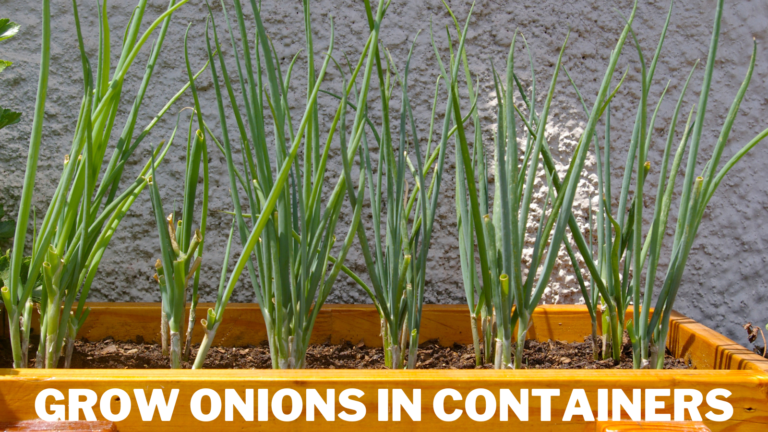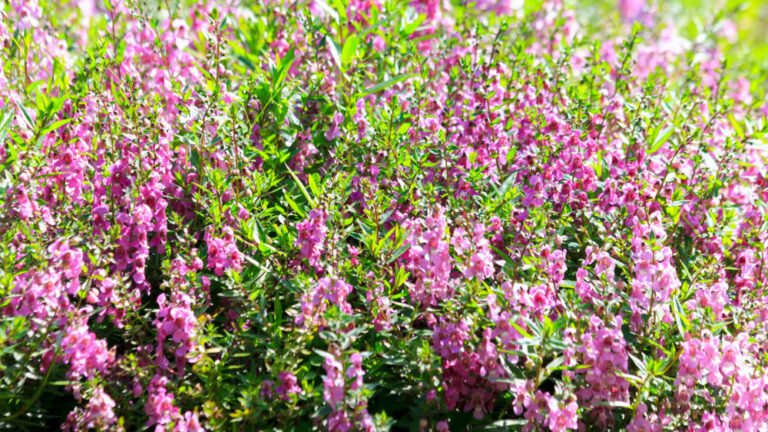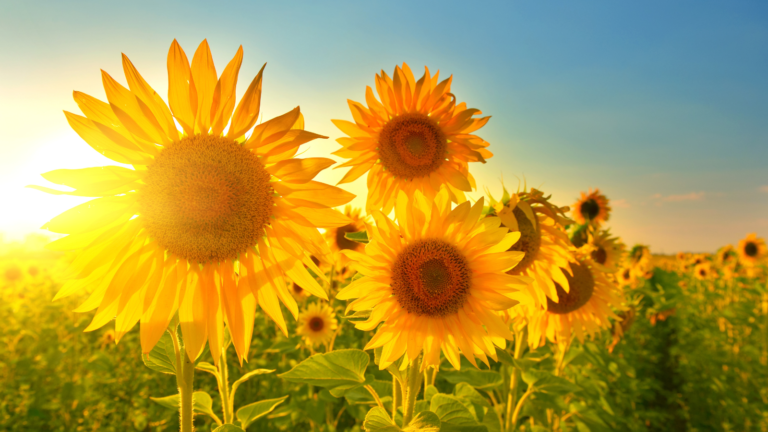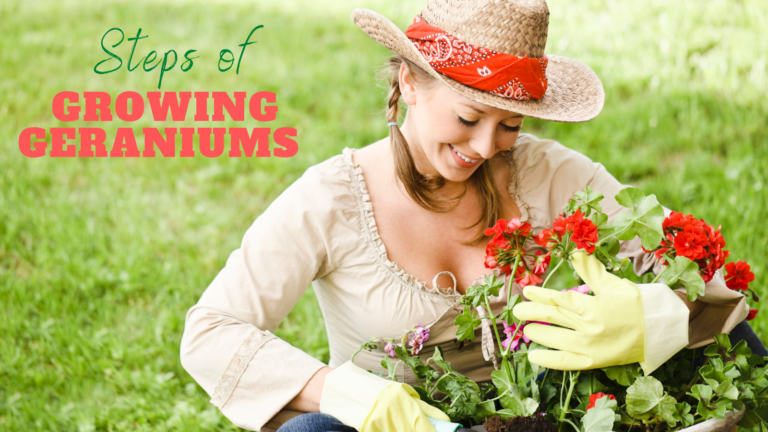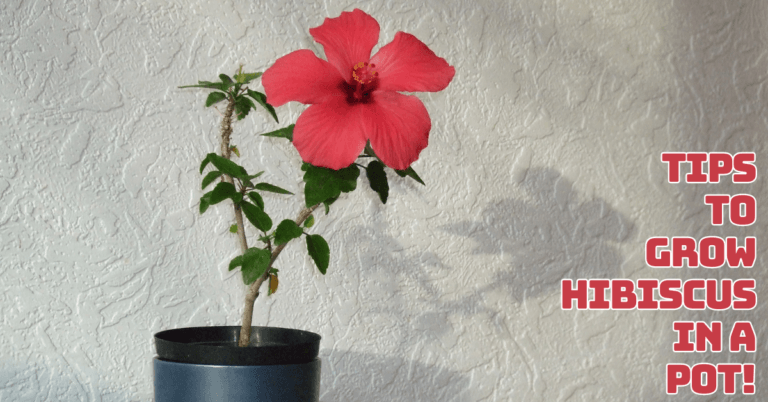Best Steps To Grow Strawflowers In Containers
Best Steps To Grow Strawflowers In Containers
The attractive, straw-like blooms on this drought- and heat-tolerant plant are prized for their vivid hues of red, orange, pink, purple, yellow, and white.
Strawflower is a dependable annual that rewards you with continuous blooms from summer until the first hard frost.
By reading, learn to grow strawflowers in containers in your garden so you may have cheery blooms all summer long and a consistent supply of long-lasting flowers for fresh and dry floral arrangements.
What Are Strawflowers?
Although you may not be familiar with the name, you have undoubtedly seen these sunny beauties in various arrangements, from spring bouquets to fall bouquets.
They belong to the aster family and have been referred to by the scientific name Helichrysum bracteatum for several centuries.
However, after the plant was reclassified, two new names were given to it:
- Bracteantha bracteata and
- Xerochrysum bracteatum, with the latter winning the taxonomic battle.
Its name is derived from the Greek words xeros, which means dry, and chrysum, which means golden; bracteatum refers to the bracts of the flower.
The bracts of a strawflower feel like stiff paper even when the flower first opens, giving it a head start as an everlasting.
Strawflower blooms initially resemble mums, but a light touch distinguishes them from mums.
History And Origin Of Strawflowers
The blooming plant Xerochrysum bracteatum, often called the golden everlasting or strawflower, belongs to the Asteraceae family and is indigenous to Australia.
Étienne Pierre Ventenat first described it in 1803, and for many years, it was referred to as Helichrysum bracteatum before being moved to a new genus, Xerochrysum, in 1990.
It is an annual with green or grey leafy foliage that can grow up to 1 m (3.3 ft) tall. From spring to autumn, golden yellow or white flower heads are produced; their papery, petal-like bracts can recognize them.
The species is ubiquitous and can be found throughout the nation in various environments, including deserts, subalpine regions, and the edges of rainforests.
The golden everlasting provides food for various lepidopteran (butterfly and moth) larvae and adult butterflies, hoverflies, and other insects.
The cultivation of the golden everlasting has shown to be quite flexible. In the 1850s, it was propagated and cultivated in Germany, leading to the availability of annual cultivars with flowers ranging from white to bronze to purple.
There are still mixed seed packs available for several plants. Many cultivars of perennial shrubs, now common garden plants, are grown in Australia.
More robust, long-stemmed varieties are employed commercially in the cut flower industry.
The plant is a simple or infrequently branching herb. It typically grows to 20 to 80 cm (8 to 31.5 in).
However, green stems are strong, rough, and coated in fine hairs in exposed situations. The lanceolate, elliptic, or oblanceolate leaves are between 0.5 and 2 cm (0.20 to 0.79 in) wide and 1.5 to 10 cm (0.59 to 3.94 in) long. They have cobwebby hairs all over them.
They have cobwebby hairs all over them. The flower heads are long stems that protrude above the foliage and are between 3 and 7 cm in diameter.
Sometimes, one stem will produce several heads. Like all Asteraceae flowers, their structure comprises a central disc containing several tiny individual blooms and florets attached directly to an expanded portion of the stalk called the receptacle.
Types Of Strawflowers
Strawflowers, commonly known as everlastings, come in various varieties. The following variations of this distinctive bloom are available. To grow strawflowers in containers, you should know about all varieties.
1. Cottage Bronze Strawflower
Cottage Bronze strawflower blooms continuously once planted, producing unique flowers in a lovely fall shade. It expands 12 inches in height and width.
2. Cottage Pink Strawflower
Cottage Pink strawflower continuously produces lovely pink blossoms in the summer and fall. Only 12 inches in both height and width are possible.
3. Cottage Yellow Strawflower
Cottage and Trial Garden in Miami, Florida A standout performer is a yellow strawflower. Its height and width both increase by 12 inches.
Grow Strawflower In Containers
Strawflowers thrive in regions with hot summers because they love the heat and can withstand drought.
These tall-stemmed beauties are adorned with colourful concentric bands. The names “Everlasting flower” and “paper flower” are other names for this native of Australia.
Strawflowers are a great option for a cutting garden, and they also produce long-lasting blooms for the garden.
Choose Right Container
Nonporous containers, such as those constructed of plastic, resin, and glazed terra cotta, are superior at retaining moisture.
Self-Watering. Water is given to the plants using a wicking mechanism, and water reservoirs are found in self-watering pots.
Polyethylene plastic bags, clay pots, plastic pots, metallic pots, milk jugs, ice cream containers, bushel baskets, barrels, and planter boxes can produce vegetables.
Location
Full light is ideal for strawflower growth, though they may also tolerate some shade. Strawflowers prefer some afternoon shade in warm regions like the low desert of Arizona during the hottest months of the year. As long as the soil is well-draining, strawflowers thrive in most types of soil.
Before planting, add compost to the planting area. Strawflowers need space to spread out and have airflow, so give them that.
Strawflowers can reach heights of 2-3 feet (61-91 cm) and widths of 6 to 18 inches (15 to 45 cm), depending on the type. For more significant types to stand upright, flower stakes may be required.
Right Time To Grow Strawflower In Containers
When the soil temperature reaches 65-70°F (18-21°C) in warm climates, strawflower seeds can be planted outside directly in the ground.
Spread seeds thinly across the soil's surface. Press lightly into the ground. The seeds shouldn't be buried too deeply because they need light to germinate. Keep the soil moist until the seedlings emerge.
The spacing between seeds should be 12 inches (30 cm). The sprouting of seeds takes 1-3 weeks.
Strawflower seedlings easily adapt to relocation. If more than one sprout appears, wait until it is a few inches tall before transferring it carefully to another garden area. Start strawflower seeds indoors in Arizona's low desert between August and December.
From October to February, sow seeds or transplants outside. Strawflower seeds should be started inside in cool climates 6–8 weeks before the last frost and transplanted outside after the nighttime temperature reaches 50°F (10°C).
Soil To Grow Strawflower In Containers
Rich and heavy soils with a mildly acidic to neutral pH (5.5 to 6.5) are preferred over sandy and rocky soils.
However, any soil is suitable as long as excellent drainage is present. Mulch is used to maintain soil moisture and a uniform soil temperature. Dig the soil up to a depth of 10 to 12 inches before planting, and add 3 inches of compost.
Watering
After a week of dry weather, these drought-tolerant flowers will still vividly bloom in the garden; nevertheless, don't allow them to wither during a prolonged drought.
Weekly watering will ensure that the flowers remain vibrant and fresh. If it doesn't rain during the growing season, give them about 1 inch of water per week, but don't go overboard.
Temperature & Humidity
Strawflowers prefer a temperature range of 65 to 70° Fahrenheit during the day and 60°F at night. Because they are not frost-tolerant, strawflowers thrive in warm climates with little humidity.
Fertilizers
Although not heavy feeders, strawflowers will bloom steadily with a monthly application of balanced flower fertilizer.
Approximately every two weeks, strawflowers growing in pots require more fertilization than those planted in the garden. Observe the label's directions for quantities.
Pests & Diseases Of Strawflowers
Pests and diseases don't often affect X. bracteatum, especially if you start with high-quality seeds or robust nursery plants.
But if you don't allow enough air movement, you could raise the humidity between plants and make a favourable environment for fungi like powdery mildew. Like overwatering, underwatering can cause fungal development or root rot in your plants.
On the other hand, underwatering may prevent the intake of vital nutrients and prevent plants from thriving. Chlorosis is a good illustration. Yellow leaves are a consequence of an inability to absorb iron.
On occasion, different insects like grasshoppers or leafhoppers may nibble. However, you can discourage them by controlling weeds and using diatomaceous earth.
Strawflower Care
In zones 8 to 11, the strawflower can act as a short-lived perennial, reliably blooming for two to three years.
However, gardeners typically raise strawflowers from seed each year. If your summers are chilly, consider growing the similarly shaped calendula since it thrives as an annual in hotter climates.
The newest cultivars of strawflowers are bred to be stocky, early blooming, and require little support; however, varieties over 3 feet tall may require staking. Your plant will continue to bloom all season long if you deadhead the flowers.
Cutting And Drying
Pick strong stems of strawflowers with blooms that are starting to open but have not yet shown their centers if you want to cut them for fresh arrangements.
Make a clean cut at a 45-degree angle across each stem immediately above its base using sanitized scissors or pruners.
Use in vases or floral foam that has been soaked as desired. The stems in a vase should maintain their firmness for up to 10 days with a change of water and a daily snip to the bottom of each. They could be wired for further support.
Strawflower stems should be cut similarly and bundled together to be harvested for dry arrangements.
Hang the flowers upside-down in a dry area until the stems are dehydrated. Use as needed for craft projects and permanent arrangements.
Harvesting
Strawflowers work well in fresh and dried arrangements as cut flowers. Strawflowers should be collected at different periods based on their intended usage.
Strawflowers should be harvested when three to four sets of bracts (petals) are open before any center pollen is visible. The stem is ready for harvest if it stays upright after a light wiggle.
Wait a little longer to harvest if it wiggles. Leave 4 to 5 side shoots below the stem after cutting it.
Remove the leaves before inserting the stem into the water. Dried strawflower petals, or bracts, maintain their shape and colour well because they are rigid, like paper.
Harvest when no yellow pollen is visible and only one to three bracts (petals) have opened. As it dries, the bracts will continue to unfold. Drying can be accelerated with a fan.
Save seeds from strawflowers to plant next season: You can have seeds to sow for years after learning how to grow strawflowers.
Leave the largest and most beautiful blossoms on the plant at the end of the season to collect seeds.
As the bloom dries, the center elongates and develops dandelion-like parachutes for every seed. As you lift the parachutes, the tiny, dark seeds will cling to or inside the flower's base.
Strawflower Uses
A lush, blossoming garden on your veranda is not only soothing but also improves the appearance of your home.
We provide you with all the uses and facts for strawflowers if you intend to grow them in your garden.
If you are a serious gardener, you should understand how to care for and use your plants. Numerous plants have numerous uses.
Multiple uses exist, including aesthetic, cosmetic or health benefits, etc. Strawflower's advantages include:
- Showy uses, water gardening, and other aesthetic applications
- Good for the Scalp, Gets Rid of Dandruff and Prevents Hair Loss
Plants are essential to human life. They are a significant food source for humans and animals, whether directly or indirectly.
Many plants are employed as medicines. All living things use oxygen in the air to breathe, which plants release into the atmosphere by absorbing carbon dioxide. Therefore, understanding how plants are used is crucial.
How To Dry Strawflowers
- Choose some straw flowers to dry before the flower's yellow center opens and becomes visible. The strawflower will continue to open as it dries. When you pick straw flowers before they are fully open, the petals still have moisture and are easier to handle.
- Cut the chosen straw flower so each head has 10 to 12 inches of stem left. Trim and eliminate any stem-mounted leaves.
- Because the stems will contract as they dry, tightly wrapping or fastening a group together, grouping small clusters of no more than a dozen flower heads is preferable to enhance air circulation and flower shape. A few inches away from the stem's tip is where the rubber band should be wrapped.
- The rubber band clusters should be hung upside-down in a cool, dry, dark, shaded place with good airflow. Your straw flowers should be dried and ready for use in two to three weeks.
- Choose straw flowers that are not fully opened and lack the center's yellow region. It is best when only the first two or three outer rows of petals have opened. As it dries, the straw flower will continue to bloom.
- After removing the flower head from the stem, leave little to no stem remaining.
- Put a piece of.22-gauge wire into the straw flower blossom's base, where the stem was affixed. The wire should be inserted just enough to keep the flower head in place but not enough to go through the entire flower.
- So that the straw flower head stays upright, insert the wire end into a block of foam. As many wired straw flower blossoms as the styrofoam block can accommodate should be inserted.
- A dry, dark, and cool place with good air circulation should be chosen for the Styrofoam block with the wired straw flowers. You should have dried your straw flowers in two to three weeks.
Easy Strawflower Ornaments
Add cheery colour to your winter décor with a simple-to-make floral ornament when the weather outside turns gloomy.
Strawflowers are easy-to-grow annuals that can be grown anywhere with full sun and well-drained soil (Xerochrysum bracteatum, Zones 8–10).
You'll need flower heads without stems for this project. You can grow your dried flower heads or purchase them from a craft supplier or grower.
You will need:
- Glass ornaments in a circle (clear or coloured)
- Use a small jar or vase to hold the ornament while you work.
- Heat-resistant hot glue gun
- Sticks of glue
- Strawflowers (40 to 50 heads per ornament)
- scissors or snips for stem trimming
- needle-nosed pliers or tweezers
The Process
- To make it simpler to glue the flower heads to the ornament, trim any stems or leaves from the back of the flower heads.
- Hot glue should be carefully applied to the back of each flower before being gently pressed onto the glass ornament.
- Continue until all of the flower heads adhere to the ornament. A medium-sized ornament should be finished in about 15 minutes.
Conclusion
You can have seeds to plant for years after learning how to grow strawflowers. Leave the most enormous and beautiful blooms on the plant at the end of the season to collect seeds.
As the bloom dries, the center elongates and develops dandelion-like parachutes for every seed. When you lift the parachutes, the tiny, dark seeds will be attached to or inside the flower's base.
I trust you enjoyed this article on the Best Steps To Grow Strawflowers In Containers. Please stay tuned for more blog posts to come shortly. Take care!
JeannetteZ
>>>Please click here to read my all-inclusive article about Container Gardening<<<
>>>Are you interested in homegrown herbs and medicine? Please click here to find out more about it!<<<
Your Opinion Is Important To Me
Thoughts? Ideas? Questions? I would love to hear from you. Please leave me your questions, experience, and remarks about this article on the Best Steps To Grow Strawflowers In Containers in the comments section below. You can also reach me by email at Jeannette@Close-To-Nature.org.
Disclosure
This post may contain affiliate links. As an Amazon Associate and other affiliate programs, I earn from qualifying purchases at no extra cost to you. Read my full affiliate disclosure.
You might also enjoy these blog posts:
Best Steps To Grow Tansy In Containers
Best Steps To Grow Milkweed In Containers
Best Steps To Grow Bluebells In Containers
Best Steps To Grow Flax In Containers
Best Steps To Grow Cauliflower In Containers















